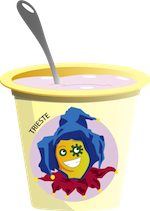Team:Trieste/notebooklast
From 2012.igem.org
(Difference between revisions)
Drikicmarija (Talk | contribs) |
Drikicmarija (Talk | contribs) |
||
| Line 19: | Line 19: | ||
<div id="chassis" class="notebook_section"> | <div id="chassis" class="notebook_section"> | ||
<h2 class="notebook_title">Cumate-Switch Regulation</h2> | <h2 class="notebook_title">Cumate-Switch Regulation</h2> | ||
| - | + | ||
<br/> | <br/> | ||
In these couple weeks we focused our attention on the integration of the CymR gene in the Nissle’s genome. We cloned the CymR in the K510012 and then we co-transformed it with the pTNS2 in Nissle obtaining some nissle with the single copy. | In these couple weeks we focused our attention on the integration of the CymR gene in the Nissle’s genome. We cloned the CymR in the K510012 and then we co-transformed it with the pTNS2 in Nissle obtaining some nissle with the single copy. | ||
<br/> | <br/> | ||
| - | + | <br/> | |
We tested and obtained the proof of the functionality of the cumate switch with the 4-isopropylbenzaldehyde, which is the precursor of the p-cumate and more abundant than cumate in the cumin spice. We plate the Nissle containg our plasmid (J23100-CymR-B0015+T5CumateOperator-GFP) in LB agar plates with different concentration of the 4-isopropylbenzaldehyde and then we analyzed the flourescence. | We tested and obtained the proof of the functionality of the cumate switch with the 4-isopropylbenzaldehyde, which is the precursor of the p-cumate and more abundant than cumate in the cumin spice. We plate the Nissle containg our plasmid (J23100-CymR-B0015+T5CumateOperator-GFP) in LB agar plates with different concentration of the 4-isopropylbenzaldehyde and then we analyzed the flourescence. | ||
Revision as of 15:34, 26 October 2012
Last month
More
Suicide System
We had problems cloning the toxin Tse2 and the CymR under the T5 Cumate operator promoter, probably because of the leaky expression of the promoter . We tried another strategy by cloning the toxin Tse2 and CymR into a low copy plasmid pMP220 and then, we cloned the T5Cumate Operator Promoter upstream the previous construct. The 4 positive colonies, checked by PCR, has been plated with and without Cumate. Two of them worked and the next step was to test them in liquid culture with different cumate concentrations ( 50 µM, 100 µM, 200 µM ).Antibody
The last month we tested the our antibodies. First, we tried to prove that the antibodies fused with LPP-OmpA fragment are actually localized into the outer membrane. To this end, we performed the FACS analisis, but we soon abandoned this approach because it was non suitable for our purpose. Then we performed an immunofloresence assay on the recombinant bacteria. This technique was more successfull. In order to test the functionality of Ab, we did ELISA test.Cumate-Switch Regulation
In these couple weeks we focused our attention on the integration of the CymR gene in the Nissle’s genome. We cloned the CymR in the K510012 and then we co-transformed it with the pTNS2 in Nissle obtaining some nissle with the single copy.
We tested and obtained the proof of the functionality of the cumate switch with the 4-isopropylbenzaldehyde, which is the precursor of the p-cumate and more abundant than cumate in the cumin spice. We plate the Nissle containg our plasmid (J23100-CymR-B0015+T5CumateOperator-GFP) in LB agar plates with different concentration of the 4-isopropylbenzaldehyde and then we analyzed the flourescence.







 "
"









